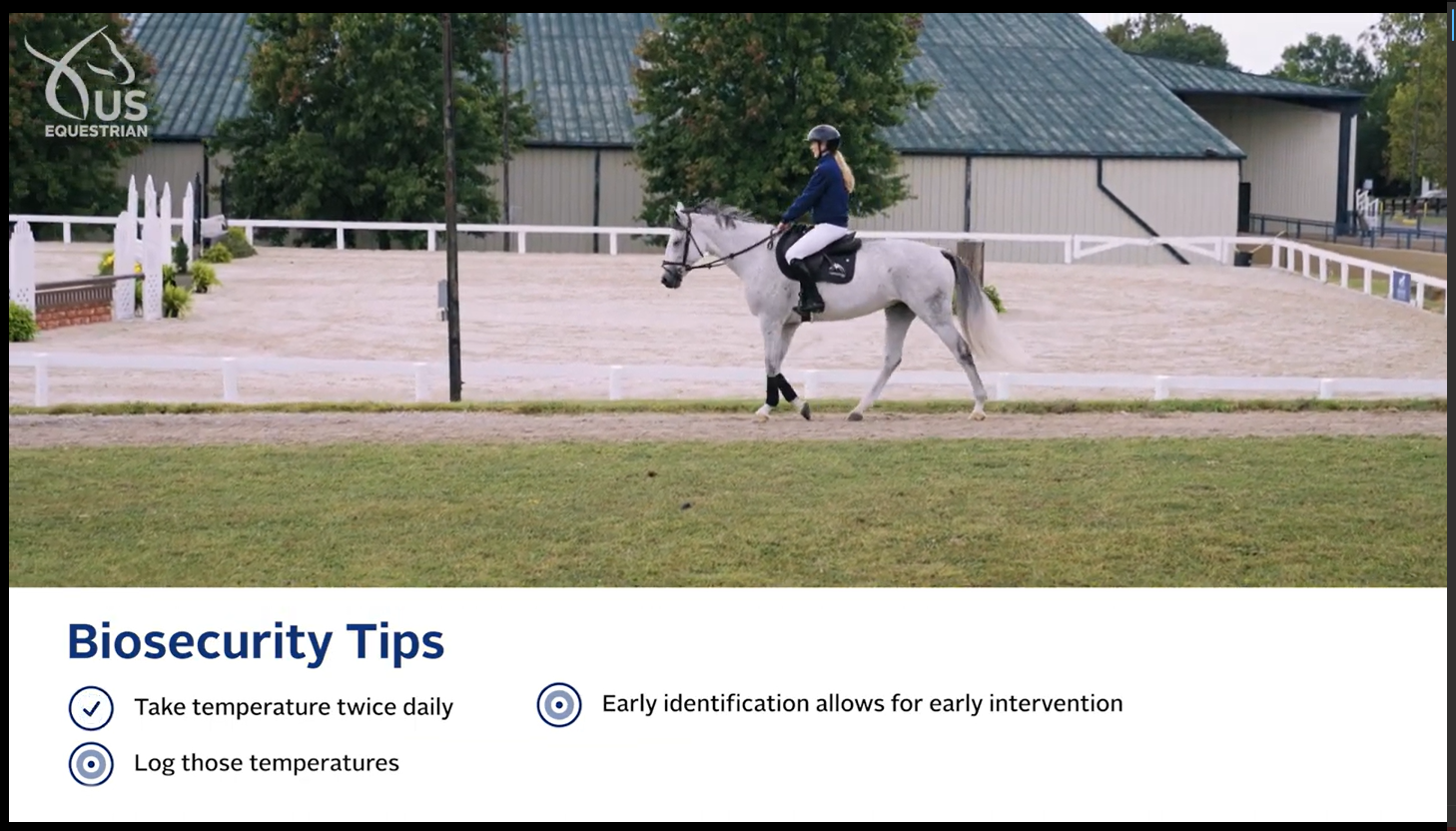
With recent outbreaks of vesicular stomatitis, equine herpesvirus, and other equine infectious diseases, biosecurity has been top of mind for equestrians, barn owners, and competition managers. Sixteen-year-old hunter, jumper, and equitation athlete Marian “Mare” Ehlers of Bend, Oregon, developed the S’mores Code in a grassroots effort to promote biosecurity practices at equestrian events.
Ehlers became interested in promoting biosecurity after dealing with equine illness among her own local equine community. In 2022, an outbreak of equine herpesvirus struck Ehlers’s equine community, taking the life of her friend’s horse, S’more.
“I learned a lot about biosecurity that day. Exhausted, I went back to our camper, which is where we stay at horse shows, and wrote out this biosecurity code,” Ehlers said.
With her mother’s help, she developed an easy-to-remember biosecurity mnemonic, named in S’more’s honor, to help equestrians do their part to prevent further outbreaks.
The SMORES mnemonic stands for Sanitize, Monitor Temperature, Observe Symptoms, Report Sick Horse, Educate, and Separate Supplies—all essential for biosecurity.
“It's mostly the existing protocol that USEF has for precautions. I just placed it into the form of an acronym to make it easy to remember,” Ehlers said. “I thought it would be an easy way for the younger generation to recognize how important biosecurity is.”
Ehlers consulted with Dr. Katie Flynn, USEF’s Senior Staff Veterinarian, who advised her to keep promoting the S’mores Code.
“Mare’s got a really good message,” Flynn said. “She's doing it to protect the horses and to prevent anybody else from having to go through the unfortunate incident that she had to go through.”

Flynn said that grassroots efforts to promote biosecurity based on sound science, such as the S’mores Code, are “the way to go.”
“It's the personal story that really does matter. It's this one girl and the one horse making a difference. She's a leader in what she's doing to try to get folks to understand at the ground level,” Flynn said. “It's not somebody here at USEF trying to say you must do this, or it's a rule or regulation. It's coming at it from the perspective of, ‘This affected me, and it could affect you.’ It's that personal story that really matters to the industry.”
In addition to collaborating with event managers and state veterinarians to develop biosecurity and isolation plans for events, Flynn develops outreach and education materials to promote biosecurity education. USEF recently released three videos covering biosecurity tips for before, during, and after a horse show.
“I think there's a common misunderstanding of what proper biosecurity is, and it's just to give people a resource and information, so they can utilize that information to better protect their horse or the competition better,” Flynn said. “A lot of the (previous) biosecurity efforts have been focused on farms; your risk factors are different when you go to an event, because you're going and commingling with horses from other states or other countries. Those risk factors are a little bit different than your home factors, so some of the measures we have to take to protect our population are going to be different.”
Along with videos, event management brochures, webinars, and posters, USEF has produced articles covering what equestrians, owners, and competition managers need to know about equine herpesvirus.
“These are all free for members to look at and utilize,” Flynn said. “Prevention is best for all of us. And the bottom line is, healthy horses, healthy competition. We have to put the horse’s health as a priority and make sure that we do the best we can to make sure only healthy horses compete.”
The Equine Disease Communication Center also provides biosecurity resources, including disease outbreak maps and biosecurity protocols.
Personally, Ehlers wishes to expand the reach of her own biosecurity information program.

“S'mores Code signs are posted at show parks like Desert International Horse Park and Sonoma Horse Park. I would love to eventually have signs throughout the country, to spread awareness,” Ehlers said. “I wrote a book called Fergus Learns Smores Code with Jean Abernethy; it looks like a children's book, but it's really for everyone. The book teaches my biosecurity acronym through cartoon illustrations."
Ehlers also hopes that these grassroots efforts help to decrease the spread of diseases like equine herpesvirus.
“I never want there to be another outbreak again. I just want everyone to learn how to keep their horses healthy,” Ehlers said.
“A lot of people think, ‘Oh, it's not going to happen to me.’ But it can,” Flynn said. “Viruses and bacteria are out in the environment. We cannot stop that, and we can't completely eliminate all risks. So, going to shows, we have to help our horses by making sure we do the best we can when it comes to biosecurity.”

